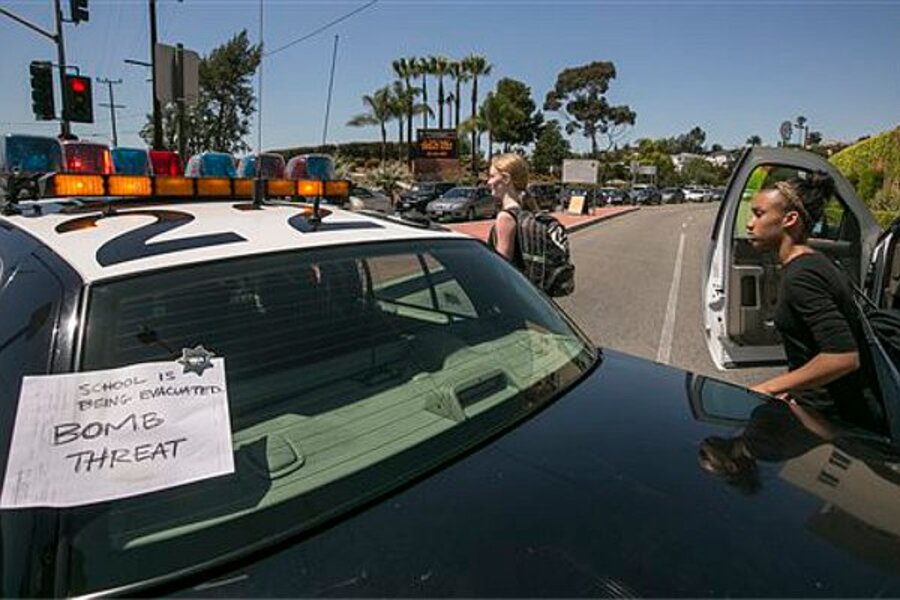L.A. bomb threats: Two threats, two very different responses
Loading...
| LOS ANGELES
When 911 callers told Southern California police Thursday that there were bombs at two state universities, one campus decided to evacuate thousands of students while the other quietly conducted searches, allowing business to continue as usual.
Such are the judgment calls local officials, jittery after the Boston Marathon bombings, are being forced to make.
The El Monte Police Department, in suburban Los Angeles, received 911 calls at 10:37 a.m. and 10:45 a.m. from payphones about a mile apart in the center of city, said Sgt. Roger Cobian, a spokesman for the department.
"The caller in each said there were bombs at both Cal State LA and 'Cal State Berkeley,'" Cobian said. The department informed officials at California State University, Los Angeles, and the University of California, Berkeley, of the threats, and the investigation was turned over to the Los Angeles Police Department.
Cobian said the department believes the same person made both calls and that the person was likely male.
Cal State LA's president decided to evacuate the campus as a precaution at about noon. A bomb squad was dispatched, but nothing was found and the search was called off at about 2:30 p.m., LAPD spokesman Richard French said.
About 350 miles away, in the San Francisco Bay Area, UC Berkeley officials decided the threat was "pretty low risk," said Lt. Eric Tejada, a spokesman for the campus police department. Officers conducted some searches of the campus but chose not to evacuate.
Cal State LA has about 20,000 students, though most aren't full-time.
Jon Beaupre, a journalism professor at Cal State LA, said the fire alarm went off at 12:15 p.m. in the middle of his lecture and the class followed normal evacuation procedures. When students arrived outside, they were told there was a bomb scare and the entire campus was being evacuated.
"That led to a mad dash, grabbing bags to get people out of here," Beaupre said.
Beaupre spoke by telephone to The Associated Press while driving in his car and trying to maneuver through heavy traffic. He described a half dozen police cars around campus and a sheriff's helicopter circling overhead.
"Apparently we can get people out of the buildings, but getting traffic away from campus is not easy," Beaupre said.
Two high schools also share Cal State LA's campus, and Beaupre said about 60 students could be seen milling around on a street corner after the evacuation.
Beaupre estimated that the evacuation involved about 8,000 students.







